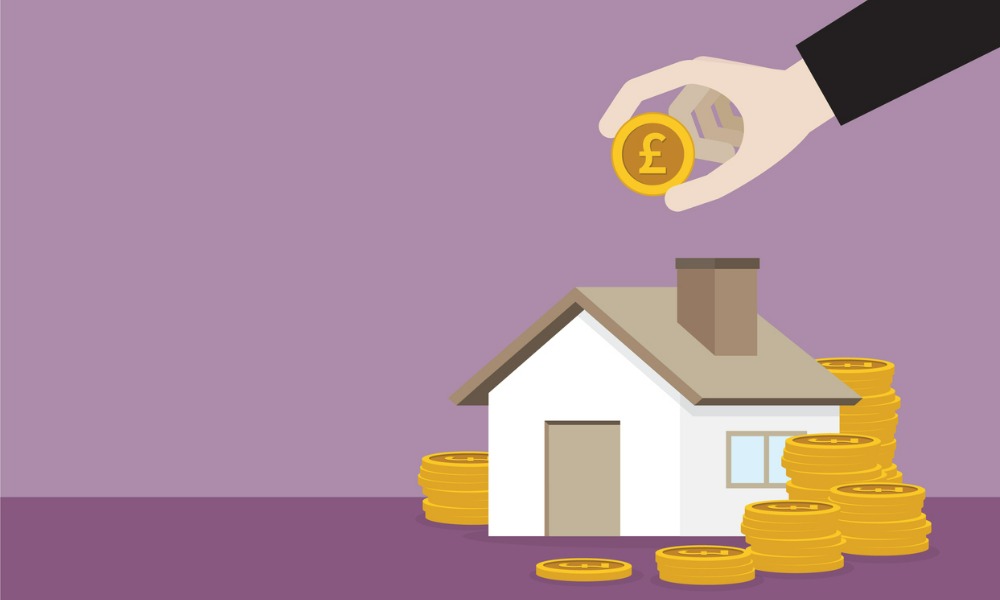They also account for nearly 28% of disposable household income

Homebuyers in today’s market are paying as much as 21.5% more, or an equivalent of £162.83 per month, when compared to those that locked in when rates were at their lowest point last year, the latest research by Revolution Brokers has revealed.
The mortgage broker looked at historic and current mortgage rates for both a variable rate and three-year fixed mortgage.
Its data analysis has revealed how much more UK homeowners and buyers can now expect to pay when it comes to the monthly cost of their mortgage repayments, following a fifth consecutive increase in interest rates by the Bank of England a few weeks ago.
A year ago, when interest rates sat at just 0.1% and the average UK house price was at £265,809, the average homebuyer was borrowing £225,938 once the 15% deposit of £39,871 was deducted. At an average standard variable rate at 3.61%, this meant a monthly repayment of £1,144.47 with £679.70 in interest and £464.77 cleared on the mortgage loan itself. This meant that the average UK homebuyer was paying £38.15 per day in mortgage costs and with interest rates remaining at 0.1% until December of last year, this cost remained largely unchanged.
However, since then a string of base rate increases by the Bank of England have pushed the average standard variable rate to 4.91%. This means that they are now paying £1,304.26 per month, with their mortgage costing them £43.38 per day.
This is a 14% increase in 12 months, stretching household finances by almost £160 more per month, with the mortgage cost per day increasing by £5.33.
Prior to the Bank of England’s first base rate increase, the best three-year fixed rate was available in October of last year at 1.12% at a 75% loan to value. Based on the average house price at the time (£264,307), this would mean those buying a property would secure an average monthly repayment of £757.89 for the following three years.
The latest data shows that this average mortgage rate has since increased to 2.26%, meaning those who have bought a property in the current market would be facing a monthly repayment cost of £920.72 – a 21.5% increase over the last year.
Meanwhile, the proportion of disposable household income required to cover the average mortgage repayment is at by far its highest in a decade, according to separate research.
Estate agent comparison site GetAgent.co.uk analysed the average annual cost of a mortgage repayment based on a three-year fixed mortgage at a 75% loan to value and what this equates to as a percentage of the average household’s annual disposable income.
The research showed that the percentage of household income required to cover mortgage costs has climbed considerably, driven by a 65% increase in the average house price over the last 10 years.
GetAgent said that although the average level of disposable household income is forecast to climb to its highest in a decade at £38,108, the proportion required to cover the annual cost of a mortgage currently sits at 27.6% – by far the highest proportion in the last 10 years.
“We’ve now seen a number of interest rate hikes in quick succession, and this will understandably come as a worry to the nation’s homebuyers, who will be facing higher mortgage costs as a result,” Colby Short, co-founder and chief executive at GetAgent.co.uk, said.
“This increase is being driven by house price inflation, with the average buyer paying almost £109,000 more than they were 10 years ago.”
Almas Uddin, founding director of Revolution Brokers, added that as the current cost-of-living crisis is hitting many households with interest rates now 1.15% higher than they were this time last year, many are finding their household income being stretched even further by the increasing cost of their mortgage.
“While an additional £5 per day may seem manageable to most, it soon adds up and really does highlight why you’re ill-advised to borrow beyond your means, particularly with a variable rate product.”
According to Uddin, for those currently looking to buy, the cost of securing a fixed rate product has increased and this is likely to curb the sums they are willing to borrow in order to climb the property ladder.
“The bad news is that further increases are expected and only time will tell as to what impact this has on buyer demand and, as a consequence, the overall health of the property market,” Uddin said.



